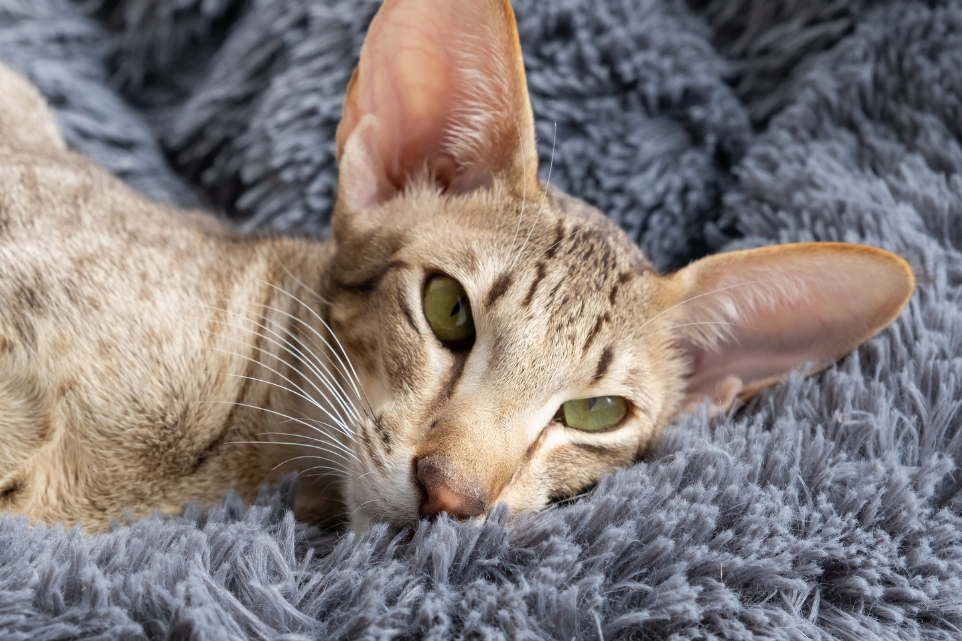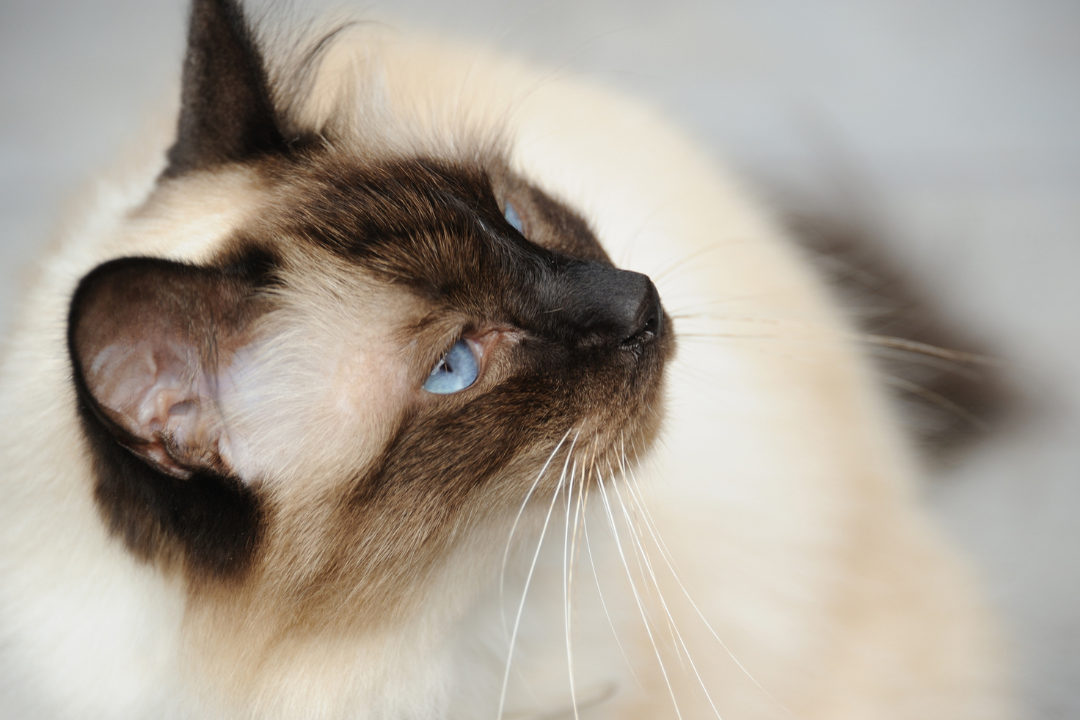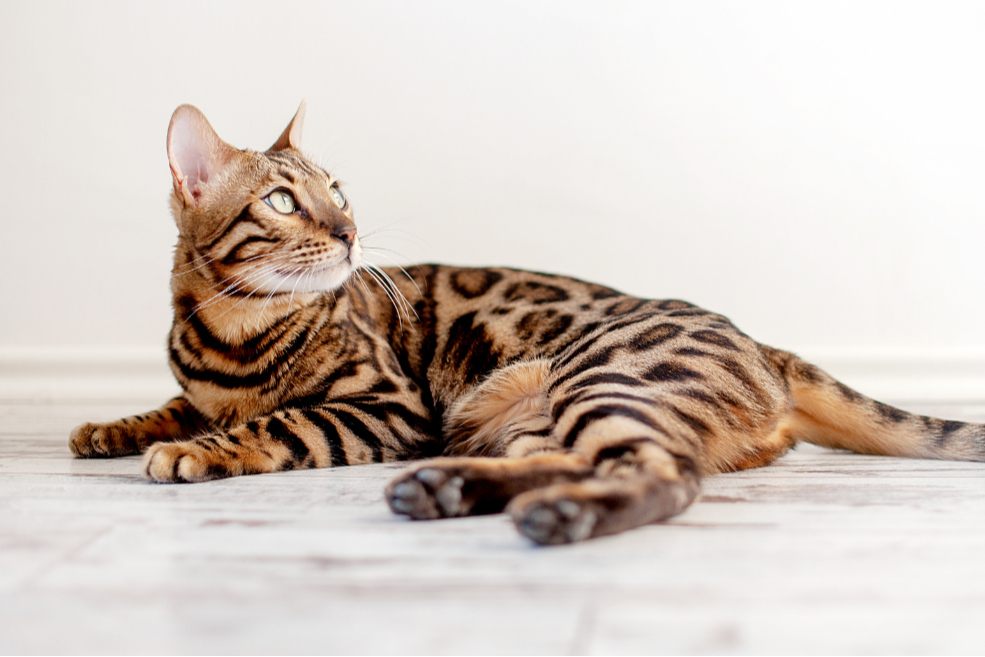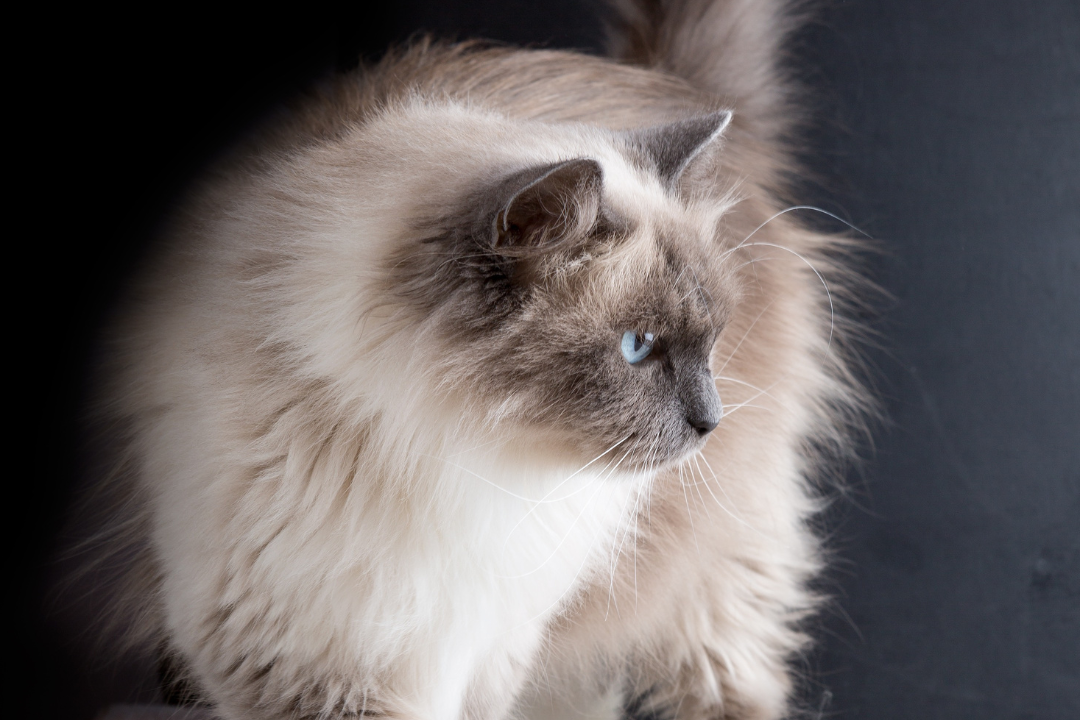Oriental Shorthair Guide
Information about the cat breed Oriental Shorthair
Weight: Males 3 - 5 kg, females 2 - 3.5 kg
Wither height: 20 - 25 cm
Energy level: Energetic
Lifespan: 8 - 15 years
Social need: Medium
Colours: Available in a number of patterns and a variety of colours, such as white, chocolate brown, blue, brown, creme, red and fawn.
Health problems: Generally healthy but can suffer from eye problems and kidney diseases such as Polycystic Kidney Disease (PKD).
Personality of an Oriental Shorthair
Oriental Shorthair, also called just Oriental, is a lively, sociable and intelligent cat breed that often talks a lot. It is very affectionate to its cat parents and requires a lot of love and attention. Play and activation are important for an Oriental Shorthair as it is an active cat with a high energy level. It likes to jump, climb and be at high altitudes - therefore feel free to get cat trees for an Oriental. Thanks to its intelligence, this cat breed is also easy to train to walk on a leash.
Looks and fur care of an Oriental
An Oriental Shorthair is medium-sized, long and slender. The long ears, elongated nose and large eyes give it a rather unique appearance. The fur of the Oriental is short, dense and glossy and lies close to the body. It doesn't really need much care, but at the same time this cat associates brushing with affection and often likes to be brushed. Since the Oriental Shorthair sheds very little, it is also a cat breed that can be suitable for allergy sufferers. Brush the fur once a week to reduce the amount of loose hair and to keep it extra fine.
Health problems in an Oriental Shorthair
The Oriental is generally a healthy cat breed. However, the size of the eyes makes it more prone to eye problems, so be sure to keep them clean. Of course, the Oriental can also suffer from hereditary diseases and it also happens that it suffers from kidney diseases, such as Polycystic kidney disease (PKD). A balanced diet can help promote kidney health.
Oral health
Did you know you need to brush your cat's teeth? Brushing your cat's teeth daily is the best thing you can do to prevent your cat from getting periodontitis, learn more about it in our app. The dental disease FORL is common among cats and often occurs in connection with periodontitis. Brushing the cat's teeth can be a challenge, but with treats and a lot of patience, the cat will eventually get used to it. Learn more about how to brush your cat's teeth in our app course.
Poisoning
There are a lot of things that are toxic to cats that you may not have thought about before. An example of this is plants, learn more about which plants are poisonous to your cat in the Lassie app. Additional examples of what is poisonous to cats are chocolate and mouse and rat poison. It is important to store things that are dangerous to cats in a place that they cannot access.






